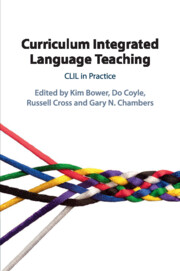Book contents
- Curriculum Integrated Language Teaching
- Curriculum Integrated Language Teaching
- Copyright page
- Contents
- Figures
- Tables
- Contributors
- Foreword
- Preface
- Acknowledgements
- Part I The Educational Context for CLIL
- 1 CLIL in Multilingual and English-Background Contexts
- 2 How Can Learners Be Motivated in a Context of Demotivation for Foreign Language Learning?
- 3 A Rationale for CLIL in Primary Schools
- Part II Current Aspects of Practice in CLIL
- Part III New Knowledge and Future Directions
- Afterword
- Index
- References
3 - A Rationale for CLIL in Primary Schools
from Part I - The Educational Context for CLIL
Published online by Cambridge University Press: 27 July 2020
- Curriculum Integrated Language Teaching
- Curriculum Integrated Language Teaching
- Copyright page
- Contents
- Figures
- Tables
- Contributors
- Foreword
- Preface
- Acknowledgements
- Part I The Educational Context for CLIL
- 1 CLIL in Multilingual and English-Background Contexts
- 2 How Can Learners Be Motivated in a Context of Demotivation for Foreign Language Learning?
- 3 A Rationale for CLIL in Primary Schools
- Part II Current Aspects of Practice in CLIL
- Part III New Knowledge and Future Directions
- Afterword
- Index
- References
Summary
Chapter 3 focuses on the early language learning context and considers why CLIL can be successful with young learners in the context of primary schools (i.e. age 5–11), how and why primary CLIL has developed and been hindered in England and how we might approach planning and implementation. It also considers the pedagogies strand of the book’s research aims. First, a rationale for early language learning given the constraints of low motivation for foreign language learning in English-speaking contexts as outlined in the previous chapter is provided. Second, how this might be addressed through using a CLIL approach that links language learning synchronously to content learning is explored. Some of the pedagogical implications resulting from this are exemplified using adapted authentic materials in French.
- Type
- Chapter
- Information
- Curriculum Integrated Language TeachingCLIL in Practice, pp. 43 - 60Publisher: Cambridge University PressPrint publication year: 2020

